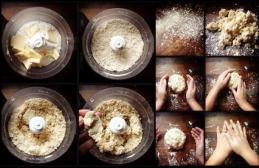A subwoofer box is more than just a box that houses a speaker. The box must comply with many dynamic laws of acoustics in order for the sound to be truly rich and clear. To make different types of boxes, different materials will be required, and the manufacturing methods will in many ways be different from one another.
Before you start designing and assembling the box, you need to decide on the choice of speaker. We recommend choosing 10-12 inch imported speakers, as they are most often used in car subwoofers and are best suited. The design of the box is also important: the quality and volume of low-frequency sound depends on it.
What types of subwoofer boxes are there?
There are several types of subwoofer boxes. The sound quality you get at the output directly depends on the design of the box. Below are the most popular types of subwoofers: Closed box - the easiest to manufacture and design, its name speaks for itself. The woofer is housed in a sealed wooden housing, which improves its acoustic performance. Making a subwoofer in a car with such a housing is quite simple, but it has the lowest efficiency. A 4th order bandpass is a type of subwoofer whose body is divided into chambers. The volumes of these chambers are different; in one of them there is a speaker, and in the second there is a bass reflex (air duct). One of the features of this type of subwoofer is the design's ability to limit the frequencies that the cone reproduces. The 6th order bandpass differs from the 4th order by the presence of another bass reflex and another camera. There are two types of 6th order bandpasses - the first has one bass reflex, and the second has two (one of them is common to both cameras). This type of box is the most difficult to design, but produces maximum efficiency. A bass reflex is a subwoofer with a special tube in the housing. It vents air and provides additional sound from the rear of the speaker. In terms of complexity in manufacturing and sound quality, this type is a cross between a closed box and a bandpass. If you want to get the highest quality sound, you can opt for bandpasses. But this type of design has many details that must be carefully designed and calculated. All this can be done using a special program WinlSD, which will not only determine the optimal size and volume of the subwoofer, but also create a 3D model of it, and also calculate the dimensions of all parts. Unfortunately, this program requires at least minimal knowledge in this area and the average car enthusiast is unlikely to be able to do everything right the first time. Moreover, in order for the program to work correctly, it needs some speaker parameters, which are also not known to everyone. If you do not plan to take part in car audio competitions, we advise you to discard the bandpasses. A bass reflex will be the most optimal solution for a homemade subwoofer. This type of box is good because the tube (bass reflex) allows you to better reproduce the lowest frequencies. In fact, this is an additional sound source that contributes to the sound of the subwoofer and increases efficiency.What material is the subwoofer box made of?

The material for making the subwoofer box must be durable, dense and well insulating sound. Multilayer plywood or chipboard is perfect for this. The main advantages of these materials are their affordable price and ease of processing. They are quite durable and provide good sound insulation. We will make a subwoofer from multi-layer plywood 30 mm thick. To make a subwoofer box we will need: Wood screws (approximately 50-55 mm, 100 pieces) Soundproofing material (Shumka) Drill and screwdriver (or screwdriver) Jigsaw Liquid nails Sealant PVA glue Carpet, approximately 3 meters Terminal block
Subwoofer box drawings
In this article we will make a box for a subwoofer with a 12-inch speaker. The recommended box volume for one 10-12 inch speaker is 40-50 liters. Calculating a box for a subwoofer is not difficult, here is an approximate diagram with the dimensions of the panels.
It is worth paying attention to the minimum distance from the walls of the case to the speaker. It, like the volume of the entire box, is calculated based on the inner surface.
Assembling the box for the subwoofer
You can start assembling. We use a 12 inch speaker.
Its diameter is 30 cm, and the first thing you need to do is cut a hole for the speaker. The minimum distance from the center of the diffuser to the wall of the subwoofer is 20 cm. We measured 23 cm (20 cm + 3 cm plywood width) from the edge of the panel and cut a hole with a jigsaw. Next, we cut a hole for the bass reflex slot; in our example, it has a size of 35*5 cm.

Instead of a slot, you can use a classic air duct - a tube. Now we assemble the bass reflex slot and attach it to the front panel of the subwoofer. We go along the joints with liquid nails and tighten them with self-tapping screws.

It is important to tighten the screws very tightly so as not to leave voids. They will create resonant vibrations that will ruin the sound of the subwoofer.

On the back cover of the box you need to cut a small hole for the terminal block. We connect all parts of the body. We make sure that we cut and fastened all the parts correctly.

We insert the speaker. Let's look and admire.

Let's move on to the interior decoration of the box. The first thing you need to do is seal all the joints and cracks with epoxy glue or sealant. Next, using PVA glue, we glue soundproofing material onto the entire inner surface of the box.


Now we cover the entire outer plane of the box with carpet, including the bass reflex slot. You can attach it with epoxy glue or using a furniture stapler.


We bought an additional amplifier, but you can also make it yourself. This is quite difficult, as it requires knowledge and practice in the field of radio engineering. You can also use ready-made kits and circuits for radio amateurs, like Master-KIT, and assemble the amplifier yourself. The only requirement for the amplifier is that its maximum power must be less than the maximum power of the speaker.
Making a hidden subwoofer with your own hands

Tired of carrying a huge box in your trunk? Then the stealth subwoofer is just made for you. This unique type of case is more practical than the classic box. It doesn't sit in a square box in the middle of the trunk and takes up less space. Often, stealth is installed in the inner part of the wing, sometimes in a niche instead of a spare wheel. The minimum box volume that requires a 10-12 inch speaker for normal operation is 18 liters. To make a passive stealth subwoofer we will need: subwoofer;

protective grille and socket for connection to the amplifier;

wire for connecting the speaker to the outlet;

multilayer plywood or chipboard (thickness 20 mm);

In this particular case, the shape needs to be adjusted to the trunk hinges so that our homemade subwoofer does not interfere with its closing. After we cut off all the excess, we cut out the side walls and the top cover from chipboard. We make the rounded part from plywood, we did it “by eye”.

To make it easier to give the plywood a rounded shape, you must first wet it, give it the desired shape, secure it and let it dry.
Chipboard sheets must be glued with epoxy glue or sealant, and then fastened with self-tapping screws. We also glue the fiberglass box using epoxy resin, and when it dries, we fasten it with self-tapping screws.

For better sealing, you can glue the seams again. We applied another layer of epoxy glue and pressed the structure with sand to help the glue adhere better.

Next we can measure the front panel and cut it out. Using a jigsaw, cut out a circle for the speaker. In order to securely attach the front panel to the body, you need to tighten it with self-tapping screws on all sides. That is, you need to install bars on the entire inside of the panel, at a distance slightly greater than the thickness of the plywood (in our case, we attached the bars at a distance of approximately 25 mm from the edge of the panel). Thanks to this, we will be able to secure the front part at the top, bottom, sides, and most importantly, securely attach it to the rounded element.

Cut a hole in the end for the socket. and on the left side we make a hole for the terminal. Before screwing the wall to the wall, I applied sealant to all joints. Then I tightened it around the edges with 2 self-tapping screws (1 on each edge) temporarily, the excess silicone was squeezed out, we removed it with toilet paper or a napkin. Then we take 2 drills. Use a 2.5 mm drill to drill approximately a 5 cm hole, then use a 9 mm drill to drill a recess for the cap. Personally, I made 3 cm gaps between the screws. screwed it on. We wait about 40 minutes and then fasten board by board in order. After we have screwed the walls A B C D onto all the internal joints, we apply silicone and cut it with a finger wrapped in a napkin (I cut it with a construction eraser for silicone; there are different cuts in mm at the corners of this eraser). The point is that all internal joints should be generously coated with silicone so that the air displaced by the sub does not escape through the crack and it does not whistle. Once I assembled everything, I coated the holes from the screws with silicone and cut them flat. Using 88 glue we glue the carpet.

How to make a subwoofer box correctly
Preparation
To make a subwoofer enclosure yourself you will need:
- Drawing;
- Materials: plywood or MDF, glue, screws, terminal block, wire for connection;
- Tools - jigsaw, screwdriver, pencil, template for mounting hole or compass.
Drawing
Having the housing parameters for the subwoofer in hand (volume, area and length of the port), you can make a drawing yourself using special programs (in my opinion, SketchUp from Google is the most convenient for this). But if you make the box for yourself, then there is no point in wasting time learning the software and doing everything the old fashioned way - by hand.
If you do not know how to calculate the body, then read the material. You can also order a paid estimate on the Internet; as a rule, it is accompanied by a clear drawing for manufacturing.

An example of a drawing of a housing with a bass reflex (FI)
Materials and fasteners
Housing material
In order to make a box for a subwoofer, you need a material that should vibrate as little as possible. From experience, it is best to use MDF (not painted, not laminated, etc.)

MDF (MDF - Medium Density Fiberboard). In Russian - medium density fiberboard.
MDF is easy to process, has good density, due to its structure it has no resonances and does not delaminate - the bass in such a box is soft and dense. MDF is more expensive than plywood and is “afraid” of moisture.
Plywood is the most common option and costs less than MDF.
Do not use chipboard or old furniture to make subwoofer boxes. A plywood or MDF body will always sound better.
If the walls are thick enough, there is no need to cover the inside of the body with vibration insulation, etc.!
Do not use material thinner than 18 mm. and the larger the volume of your case, the thicker the walls should be.
Many large stores that sell sheet material offer a cutting service to your dimensions, where they will cut the perfect parts for you on a machine, all that remains is to assemble the body.
Fasteners
For fastening it is best to use yellow screws length at least 2 times the wall thickness. The heads of black ones often break off; they are thinner and not as strong. An advanced solution is furniture bolts, but if this is your first sub, then it will be easier with self-tapping screws.

Yellow screws, black screws, furniture bolts.
Cage nuts for attaching a subwoofer to the case - that's cool! The sub can also be secured with self-tapping screws, but with bolts in the mountings, the speaker is attracted as tightly as possible, and if necessary, it can be removed and installed as many times as necessary without damage. And the polished hex bolts look really cool.

Bolt with cage nut
Glue
If you are sawing the walls with a jigsaw or a hand-held circular saw, then the glue will additionally act as a sealant between the uneven edges; any liquid wood nails will do for this. If you unraveled the material on the machine and the edges of the body walls are perfect, then you do not need to use glue; it will be enough to coat the joints from the inside.
Terminal block
You can route the wires directly, but it is better to make a box for the subwoofer with a terminal block.

Terminal block for housing
Use threaded options - they are more reliable. For round seats, it is convenient to cut a hole using a nozzle.
Wires
You will need a piece of wire to connect the subwoofer coil to the output terminal block. Take any copper wire no thinner than 4 mm. in most cases this will be sufficient.
Tools
You will need:
- A circular saw— for cutting material, it can be either manual or stationary, it all depends on your capabilities. It is better not to cut with a jigsaw, the edges will be too uneven, even if you attach a guide bar, since the file can still wander.

- Jigsaw- for cutting out holes for the speaker and for the terminal block, it can also be a router, with its help the holes will be smooth and neat. To cut out the wall for a round terminal block, you can use a saw attachment. Select the right jigsaw blade for the job at hand.
- Screwdriver- for tightening screws and drilling holes.
Cutting parts
So, you have decided on the shape for the sub box and you have a drawing.
Mark the sheet according to the parts and cut according to the marked dimensions. Use a disk with a large number of teeth; the smaller the tooth size of a circular saw blade, the fewer chips you will get, and their size will be insignificant.

If you use a manual circular saw and your hand is not full, better to use a guide, so as not to accidentally “fail” the cut.
It is better to do this work together, since it is quite inconvenient for one person to move large sheets and hold them while working.
Below is a good video from Rockford Fosgate, although in English, but everything is clear here without translation - choosing the shape of the body, lining up the parts, cutting.
Subwoofer enclosure assembly
To properly make a box for a subwoofer, before screwing in a self-tapping screw, drill a hole for it with a thin drill, this will increase the strength of the fastening and protect the plywood from delamination. Distribute the number of screws evenly along the length of the side and make sure that they do not meet at the corners.
Almost always a template for cutting out the mounting hole comes with the sub; it can be part of the box or be a separate attachment. Cut out the template, transfer it to the front side of the box and cut it out with a jigsaw or router.

Template for mounting hole (cut from box)
If you don’t have such a template, you’ll have to arm yourself with a compass. When marking and cutting out the hole for the speaker, be very careful! The basket shelf is almost always narrow. If you cut less than required, the subwoofer basket will not fit into the hole; if you cut a little more or not exactly, the sub will not fit tightly or the mounting screws will hang in the air.
For heavy subwoofers, it is recommended to make the front wall of the housing double to eliminate vibrations during speaker operation.

Double front wall
With large dimensions of the case, double walls may not be enough and in some cases it will be useful to use spacers.

Options for struts and stiffeners
Please note that all wire entry channels, terminal blocks, etc. must be sealed, internal partitions (port walls) must not have any gaps.
It is convenient to cut a hole for a round terminal block using a nozzle; when installing it, do not forget to glue it around the perimeter.

When tightening the screws, do not overdo it so as not to tear it off and do not forget to pre-drill holes for them.
If you use cage nuts to mount the speaker, then first install it in the seat, accurately mark the drilling locations, remove the speaker and drill through the front wall according to the marks (make sure that the drill is always perpendicular to the plane). Select the thickness of the drill in accordance with the diameter of the embedded nuts. Install the nuts into the prepared holes from the inside of the body so that they do not fall out when the bolts are screwed into them.

Cage nuts on the inside of the front wall
When screwing the speaker, do not forget to connect it to the terminal block; for this, you can solder the wire to it or use special terminals.
Informative video of assembly and gluing using the example of Rockford's serial Subic.
If your case was correctly designed, it is sealed, strong and with sufficient wall thickness, then its sound will definitely please you.
In contact with
I figured it out, calculated it, and then drew a box, and at the same time I learned how to sketch. Nothing complicated. I made the settings lower. I can’t say exactly what it turned out to be yet, I didn’t have time to measure it, but I was aiming at 31Hz. You just need to measure it, but there is no time on weekdays, only on weekends.
When making it, I tried not to rush, so that everything would be neat.
I calculated the box myself, based on the size of the trunk, manufacturer’s recommendations, musical preferences and amplifier. Manufacturing material - 20 mm plywood. The top cover and the second layer of the front wall are made of 24mm plywood, because There are no 20 mm left, and there are no stores in the city.

The coils on the sub are 2+2, connected at 1 Ohm.

PVA wires 2*6 sq.mm.

Assembly in progress

Everything is standard, joints with liquid nails, screws every 5cm

The joint did not fit because the cover was made of thicker plywood, so I had to straighten everything with a plane.

Milling a seat for the terminal

The second layer of the front wall is temporarily fixed. Preparing for milling the hole for the sub.

Milling process. The speaker is recessed by 17 mm. The depth of the rubber ring is 15mm.

It’s so cozy here...))))

I secure the mortise nuts from the inside. Hex bolts 40mm long.

I glue the front wall and secure it with self-tapping screws. In the thinnest part of the cutout I applied several layers of varnish to strengthen it a little.

We do the final fitting before fitting. You never know, maybe it won’t fit. Everything is perfect!

I cover everything with carpet

The port was painted white, the plywood was pre-varnished a little

The leads at the terminal are no good, we find a solution to the problem.

It’s a pity that there was no crimping or heat shrinking... But there was a hammer and electrical tape! May the car audio gurus forgive me for this mistake...))))

Comparison with ChV on 10 Ural

Well, the final look

Plays for now from Kix 600 in 1 ohm. Kix will be replaced later, but that will be a completely different story...
Well, happy upcoming year to everyone! Wishing you plenty of bass in the New Year! Well, just plenty!
A subwoofer is a separately installed speaker system that is designed to reproduce low-frequency sound waves in the range of 20-120 Hz. It only sounds at low frequencies when the main speaker system only at high and mid frequencies. Low-frequency sound is unrecognizable to the human ear, so it can be mounted anywhere in the car interior. Making your own subwoofer is not a difficult task. You need to start by purchasing speakers.
Types of subwoofers
There are passive and active subwoofers.
Passive subwoofer It is a housing with a speaker built into it. For a subwoofer of this type to operate correctly, an external amplifier with sufficient power is required.

It comes with its own low-frequency amplifier already built into it with the ability to adjust the volume. Many active subwoofers also have bass and treble cut controls. This is necessary so that the sound from the subwoofer is consistent with the speaker system. The most significant drawback of this type of subwoofer is its high price.
Interesting to know! In 1998, Russian craftsmen from the Autolux company created the Bluesmobile from a Nissan Terrano II. It was equipped with four amplifiers, six speakers and nine subwoofers, with a total sound pressure of 147 dB. This monster holds an official record of 135.9 dB. But this is quite enough to feel how your internal organs “walk” throughout the body.
Choosing speakers for a subwoofer
Typically, subwoofers use speakers of the following sizes:
Six-inch speakers, used as additional sources of mid-bass frequencies.
Eight-inch speakers, used to produce front bass.
 perfectly reveal their potential in a closed case with a volume of 15-20 liters. This results in a good subwoofer of compact size with optimal sound pressure.
perfectly reveal their potential in a closed case with a volume of 15-20 liters. This results in a good subwoofer of compact size with optimal sound pressure.
Twelve inch speakers are optimal for housings from 25 to 35 liters. This is perhaps the most optimal option.
Fifteen inch speakers often used in SPL sound pressure competitions. They are built only into housings from 60 to 90 liters, and such a device will not fit into every car.
The basis of the resistance difference in the sound coil operates on the principle: the lower the load resistance the amplifier has, the higher its power. A load of 1-2 ohms leads to deterioration in sound quality. It is recommended to choose twice the load of 2-4 ohms.
Neither experts nor amateurs have yet agreed on the power characteristics of the speakers. But what can be confidently confirmed is the need to choose a speaker that is superior in power to the amplifier. No audio system is designed for long-term operation at peak power. This leads to an increase in nonlinear distortions and a significant decrease in the quality of reproduced sound signals. Therefore, some balance must be maintained.
Selecting speaker parameters
 Now it's time to create a virtual model of a homemade subwoofer. It is better to design the future box using the WinISD 0.44 program, but this will require some characteristics of the speaker, or rather the Thiel-Small parameters:
Now it's time to create a virtual model of a homemade subwoofer. It is better to design the future box using the WinISD 0.44 program, but this will require some characteristics of the speaker, or rather the Thiel-Small parameters:
Qts- speaker quality factor;
Fs- resonant frequency in open space;
Vas- equivalent volume.
You won't have any problems with the Fs parameter. For GDN35 Fs will be 38 Hz, for GDN50 - 40 Hz, and for GDN75 it will be 25-35 Hz. If the speaker is branded and made abroad, then its parameters can easily be found in the WinISD 0.44 database.
When calculating the subwoofer box enclosure, the most important parameter is Qts. This parameter determines the ratio of the transfer function of the frequency dynamics Fs to the transfer function at those frequencies whose frequency response is horizontal. To put it another way, at frequencies above Fs, Qts determines the efficiency of the speaker at the resonant frequency. The only problem is that low-frequency speakers, for example, of the HDN standard, are produced in different places, and the parameters vary greatly between different manufacturers.
When calculating a box for a subwoofer, it is necessary to take into account all possible variations in Qts values and add waste options. Many sources indicate the following parameters:
35GDN-1-8 Qts = 0.4;
35GDN-1-4 Qts = 1±0.5;
50GDN-42D Qts = 1±0.5;
75GDN-1-4 Qts = 0.2-0.5.
Vas- is not a particularly important parameter that affects the calculations. It can be considered equal to the following:
GDN35 - 40-50 l.;
GDN50 - 90 l.;
GDN75 - 80 l.
Designing a Subwoofer Box Using Software
 The next stage of making a subwoofer with your own hands is to choose the type of box. Using the program, you can create projects of four types of boxes:
The next stage of making a subwoofer with your own hands is to choose the type of box. Using the program, you can create projects of four types of boxes:
closed box;
Bass reflex;
4th order bandpass;
6th order bandpass.
Each speaker has its own positive and negative sides. The choice of box, to a large extent, should be made based on the selected speaker itself. The program will help you figure out which box will suit the speaker best.
Before creating a subwoofer box project, you need to model the speaker with the parameters stored in the database.
Design consists of varying the size of the boxes and adjusting the frequency of the bass reflexes. The program reacts to the changes you make and changes the sound graph in real time depending on the frequency. To adjust the frequency of the bass reflex, the length of the pipes and their diameter are changed. Make sure that the size of the pipes does not turn out to be too large; this will be indicated by the Vent mach field, which will light up in red.
The ideal graph is the one that crosses the -3 dB line at a frequency of 25-35 Hz, and then passes along the 0 dB line and drops to 150-200 Hz. Further design will involve searching for possible deviations.
Types of box design
 There are four most popular types of subwoofer boxes. The design features of the boxes directly affect the quality of the sound obtained at the output. Below we will briefly talk about them:
There are four most popular types of subwoofer boxes. The design features of the boxes directly affect the quality of the sound obtained at the output. Below we will briefly talk about them:
is the easiest option to model and manufacture. In fact, its name expresses its essence. The subwoofer speaker is placed in a closed wooden housing, which improves its acoustic characteristics. It won’t be difficult to make such a case, but its efficiency is the lowest of all those presented.
It is a body divided into chambers of different volumes. A speaker is placed in one of them, and an air duct in the other. The peculiarity of this subwoofer design is the ability to limit the frequencies reproduced by the diffuser. Bandpass 6th order
differs from the previous one only in that it has one more additional air duct. This type of design is the most difficult to design and create, but has the highest level of efficiency.
– a housing with a tube built into it that removes air. Due to this tube, additional sound comes from the rear of the subwoofer. In terms of the quality of sound characteristics and the complexity of manufacturing, this type can be placed between “ZY” and “Bandpass”.
Subwoofer housing drawings 
For example, let's look at the diagram. In this article we will make a box for a subwoofer with a 12-inch speaker. The volume of the structure for it should be 40-50 liters. Designing a housing for a subwoofer is not difficult. Here is a rough diagram for this. Just pay attention to the minimum distance from the speaker to the walls of the box. It, like the entire volume of the structure, is calculated on the inner surface.
Material selection and required tools
Speakers, when choosing which, you need to know the difference in their characteristics. Usually the instructions or on the box indicate the recommended design specifically for a given speaker.
Plywood sheet, fiberboard, chipboard. The quantity must be calculated based on the size of the future building.
Acoustic terminal. Optional element. You can simply drill a couple of holes through which to bring the wires out of the speaker.
Acoustic cable.
Sealant or PVA.
Self-tapping screws for wood.
Epoxy resin.
Varnish or paint.
Glue for carpet. The one in the can is convenient.
 A bass reflex enclosure requires a tunnel of a suitable size. If you do not find what you need on sale, then purchase a pipe of the required material at a building materials store. Plastic, cardboard and even metal will do.
A bass reflex enclosure requires a tunnel of a suitable size. If you do not find what you need on sale, then purchase a pipe of the required material at a building materials store. Plastic, cardboard and even metal will do.
Necessary tools to create a subwoofer enclosure:
Jigsaw.
A screwdriver, if not, a screwdriver.
Roulette.
Pencil or marker.
Carpet or other material for the outer covering of the body.
Scissors.
Case manufacturing stages
1. Cut the walls of the housing according to its dimensions. It is necessary to cut, observing the dimensions, carefully measuring. When assembling, the gaps should be minimal; ideally, the body parts should fit as tightly as possible to each other.
 2.
Coat the joints of the walls with sealant and connect them together. Then secure them with self-tapping screws in increments of five centimeters.
2.
Coat the joints of the walls with sealant and connect them together. Then secure them with self-tapping screws in increments of five centimeters.
3. Re-coat the joints both outside and inside. Do not allow even the slightest holes, as a whistle will be heard through them when the subwoofer is operating.
4. Cut a hole for the speaker terminal in a convenient location.
5. Use a jigsaw to cut out a hole for the speaker.
6. If the box is designed for a bass reflex subwoofer, then the corresponding port is installed in the corresponding hole using epoxy resin.
 7.
To protect the case from moisture, it must be coated with varnish or paint.
7.
To protect the case from moisture, it must be coated with varnish or paint.
8. Cover the case with carpet or other material, leaving holes for the speaker, port and terminal.
9. Place the terminal in its place and secure it with self-tapping screws, additionally coat it with epoxy.
10. Secure the wires inside the terminal to the terminals. Connect the other side of the wire to the terminals on the speaker. The wires should not sag. The length should be sufficient for connection.
11. Reinstall the speaker. Seal the joint between the speaker and the box with a gasket. If this was not included with the speaker, you can use foam rubber or window sealing.
 12.
Secure the speaker to the body with the self-tapping screws that came with it or any other suitable ones.
12.
Secure the speaker to the body with the self-tapping screws that came with it or any other suitable ones.
Now let's talk in more detail about how to make a subwoofer yourself and mount it on a car. The most convenient and universal body shape is a slightly truncated pyramid. Since most cars have a standard rear seat angle of 23 degrees, the rear wall of the subwoofer is inclined at the same angle. After determining the required space, calculate the size of the case and draw a drawing of the body of the future wooden case.
It is better to make the front wall from chipboard with a thickness of 23 mm, the side wall - 20 mm. Cut out the walls from the material according to the dimensions in the drawing, and then assemble the body. It is better to lubricate all connections with glue and secure with self-tapping screws. It is better to drill the holes for them to 3 mm, and for the heads it is better to take a drill with a diameter of 1 cm. Next, on the side, use a compass to make markings for the future acoustic terminal. Cut them out with a jigsaw. A terminal under high pressure may make unnecessary sounds. To avoid this, shield it with a small box, then coat the joints with glue and secure with self-tapping screws. Use a plane to cut off any excess projections.
 In the front, mark and cut a hole for the speaker in the same way. To protect against moisture, impregnate the body with nitro varnish. It can also be applied to the inner end of the front panel. For greater attractiveness and practicality, the exterior of the body can be covered with carpet. It sticks to the same nitro varnish. Connect the speaker to the speaker terminal and attach them to the housing.
In the front, mark and cut a hole for the speaker in the same way. To protect against moisture, impregnate the body with nitro varnish. It can also be applied to the inner end of the front panel. For greater attractiveness and practicality, the exterior of the body can be covered with carpet. It sticks to the same nitro varnish. Connect the speaker to the speaker terminal and attach them to the housing.
Housings for this type of subwoofer are quite bulky. Such a subwoofer is difficult to calculate and configure, but such a homemade element of a car speaker system has a higher efficiency than the previous version. In this case, the parameters are also calculated using special software. The assembly of the body is carried out as in the previous version, only it must also be carefully sanded. Next, cut out holes for the bass reflex, handle pockets and socket. Install all fasteners and check them thoroughly. The body can be covered with leather.
The manufacture of a housing for this type of subwoofer should be undertaken by those who have experience in making calculations, because it is difficult to calculate and it is easy to make mistakes in dimensions. But the bandpass produces a wonderful sound and has good efficiency. In addition, it is well protected from external mechanical damage, as it is completely hidden in the housing. Calculations are also carried out using computer software, but not only for the entire body, but also for each of the cameras separately. When you cut out the parts, stick to all the dimensions as closely as possible.
 The design is assembled as in previous versions. The partition with the speaker is made from two sheets of chipboard. The inside of the body is covered with sound-absorbing material, batting, for example. The glue is applied in small strokes over the entire area. Do not pour a lot of glue to avoid static properties. You can additionally secure the structure with a construction stapler. Solder the wires to the terminal and speaker. The rear camera must be completely sealed. The greatest tightness is achieved thanks to liquid nails and tape glued over the seam.
The design is assembled as in previous versions. The partition with the speaker is made from two sheets of chipboard. The inside of the body is covered with sound-absorbing material, batting, for example. The glue is applied in small strokes over the entire area. Do not pour a lot of glue to avoid static properties. You can additionally secure the structure with a construction stapler. Solder the wires to the terminal and speaker. The rear camera must be completely sealed. The greatest tightness is achieved thanks to liquid nails and tape glued over the seam.
The bass reflex bell is made by heating the edges with a can and expanding them. A carpet with a bass reflex is placed in the hole cut with a jigsaw in the lid. Coat the joints with liquid nails. The cover with the bass reflex is covered with noise-absorbing material on the back. Assemble the finished subwoofer and cover it with carpet.
It is a body divided into chambers of different volumes. A speaker is placed in one of them, and an air duct in the other. The peculiarity of this subwoofer design is the ability to limit the frequencies reproduced by the diffuser.
This is the most difficult subwoofer to assemble and calculate. You shouldn’t even approach this without thorough preparation. Comparable with the previous version, but produces a much larger frequency range. Its efficiency and power are difficult to calculate even with the help of simulation programs. As a rule, all parameters are selected solely according to personal preferences.
The design of the body is much more complicated than in previous versions. To make the connections much stronger, they are made from wooden blocks secured with self-tapping screws. Cut all parts strictly according to the calculated dimensions. Everything is done further using a technology similar to the fourth bandpass, only use cotton wool as an additional soundproofing material.
Homemade stealth subwoofer
 This type of subwoofer is hidden as much as possible and takes up almost no space in the trunk, so it is very convenient to use in a car. It is usually installed in the trunk behind the rear arch. A good speaker requires a housing of 18 liters, and sometimes more. The housing can be moved slightly inside the trunk, and the subwoofer can also be placed in a niche intended for a spare tire.
This type of subwoofer is hidden as much as possible and takes up almost no space in the trunk, so it is very convenient to use in a car. It is usually installed in the trunk behind the rear arch. A good speaker requires a housing of 18 liters, and sometimes more. The housing can be moved slightly inside the trunk, and the subwoofer can also be placed in a niche intended for a spare tire.
When installing a stealth subwoofer, you need to extend its front panel slightly and connect it to the luggage compartment upholstery.
It is necessary to construct a form from corrugated cardboard by gluing its pieces together with masking tape. Assemble the amplifier frame and try on the equipment. Next, make a fiberglass cladding panel for the amplifiers that are already installed on the frame. Seal all spaces between the plastic with tape and polyethylene. Then everything is screwed with self-tapping screws to the housing box. Corrugated cardboard is used as formwork to eliminate gaps in the body.
To give a more attractive appearance, you need to use fiberglass and putty. Install the subwoofer into the rear fender and smooth out any uneven surfaces with sandpaper. Cover the body with carpet and attach the speaker.
 Subwoofer backlight To illuminate the subwoofer, you can use both LEDs and diode strip. LEDs have two contacts: anode (A) and cathode (K). To properly connect the LEDs, you need to connect pin A to the positive on the power supply, and K to the negative. The resistors of each individual LED are soldered to the Anode. Decide in advance how you will mount the LEDs inside the subwoofer. It is better to place them so that they stick together and tightly.
Subwoofer backlight To illuminate the subwoofer, you can use both LEDs and diode strip. LEDs have two contacts: anode (A) and cathode (K). To properly connect the LEDs, you need to connect pin A to the positive on the power supply, and K to the negative. The resistors of each individual LED are soldered to the Anode. Decide in advance how you will mount the LEDs inside the subwoofer. It is better to place them so that they stick together and tightly.
The equalizer sensor must be located away from the subwoofer so that it is not damaged. If you use an LED strip as backlight, then fixing the diodes is replaced by installing the strip.
Every car owner who tunes his car is guided, for the most part, only by his preferences, taste and imagination. What experts advise is generally accepted as recommendations. The same can be said about how to create subwoofers yourself and then install them.
Most car owners pay a lot of attention to the audio content of their car, install multifunctional head units that are in no way inferior in performance to modern computers, connect powerful sound amplifiers, and make special audio podiums to improve the sound quality of the speakers. An important role in a car's sound equipment is occupied by a subwoofer - a special low-frequency speaker that reproduces the bass components of a musical composition.
Regular car speakers can be installed in the standard sockets of the car, but the subwoofer needs a special box in which it will be installed. You can make such a case yourself, and if you take into account the size and shape of the trunk during design and manufacturing, the subwoofer will fit perfectly into the luggage compartment and will not take up much space.
Calculation of the required volume, type of housing
Making a cabinet for a woofer begins with determining the type of cabinet we need. The boxes are:
- with open body;
- with a closed body;
- with bass reflex;
- bandpass housing.

The type and volume of the case is quite easy to determine. To do this, you will need to know three speaker characteristics (the optimal speaker size for a car subwoofer is 12 inches), they are indicated on the subwoofer box or in the instructions, you can also find these characteristics on the manufacturer’s website:
- Fs – natural resonance frequency;
- Qts – total quality factor of the speaker;
- Vas is the equivalent volume of the speaker.
The housing type is determined by dividing the resonance frequency Fs by the speaker quality factor Qts:
- Fs/Qts>30 – open case;
- Fs/Qts>50 – closed housing;
- Fs/Qts>85 – bass reflex;
- Fs/Qts>105 – bandpass.

So, we have decided on the type of case, how to calculate the required dimensions based on the given volume Vas? It is best to calculate the subwoofer enclosure using special programs such as Perfect Box 4.5, Blaubox, VASCalc. Using such programs, you can calculate boxes of any geometric complexity. These programs are shareware, so no problems with the law. To ensure that the subwoofer fits well in the trunk and does not take up useful space, approach the measurement process with all seriousness; the future box should fit where you intended.
Housing materials
Subwoofer enclosures are made mainly from chipboard with a thickness of at least 16 mm, or plywood, preferably birch or shiplap. If the thickness of the material is not enough, you can fold 2 sheets together, fastening them with glue or self-tapping screws. Also during the manufacturing process you will need silicone sealant or wood glue, contacts for connecting the audio wire to the subwoofer and a round bass reflex, if the appropriate housing is selected.

You can buy a bass reflex in specialized stores or make it yourself from a piece of plastic pipe. To protect the wood from moisture and condensation, the body must be painted inside and outside with nitro enamel. The outside of the body is sheathed with carpet in the color of the trunk trim.
Stealth Corps
Well, if you don’t want to lose space in the trunk and bother with body calculations, you can make a stealth type box. This is a box hiddenly installed in one of the niches of the trunk, for example, on the side of the fender. This subwoofer enclosure is good for speakers sized 12 inches and below. The principle of making this case yourself is quite simple.

The niche for the subwoofer is cleared and completely covered with masking tape, preferably in a couple of layers. Cover with film or newspaper those parts of the casing and body that may accidentally get epoxy resin, otherwise it will be very difficult to remove it later. A thin layer of epoxy resin is applied on top of masking tape; after drying, the base of the stealth body is pasted over with epoxy resin with pieces (10*10 cm) of fiberglass over the entire surface. After applying the first layer of fiberglass and completely drying, the workpiece can be carefully removed from the trunk.

Fiberglass fabric is pasted over in 2-3 layers for strength and the required thickness. After drying, we try on the future body in the trunk niche and mark the cutting line of the edges with a marker. We cut off the excess with a grinder, and we are left with an almost finished housing for the subwoofer. We make a washer from chipboard or plywood into which the speaker will be attached. Please note that if the speaker is 12 inches, then the seat for it must be appropriate, try it on right away. We fasten the landing ring at the desired height inside the future housing using epoxy resin and stop rails.
We cover the top of the case with Lycra and coat it with epoxy, then we cover the top part of the case with fiberglass in 2-3 layers, without sealing the hole for the speaker. Particular attention should be paid to the junction of the upper and lower parts of the body; it is best to glue them inside and out. After drying, holes are cut for the bass reflex (if necessary) and for the subwoofer terminals. The body is covered with carpet, connected and installed in the trunk niche.

Advantages of a home-made case:
- The case will fit perfectly into the trunk, because all dimensions were taken into account individually during design.
- The efficiency of a homemade enclosure will be at the same level, if not higher, than that of standard models sold in stores, because your enclosure is designed for a specific speaker, and not just for the size of the seat.
- The stealth case will not take up space in the trunk and will provide high-quality sound.
- You choose the color of the upholstery yourself, and you can choose materials that perfectly match the interior.

The body of the bandapase is much more difficult to manufacture. The design includes several cameras and bass reflexes, but the sound quality with the correct calculations of such a box will be at the level of professional equipment. Although, if you try hard, even the most complex subwoofer enclosure can be made with your own hands.








